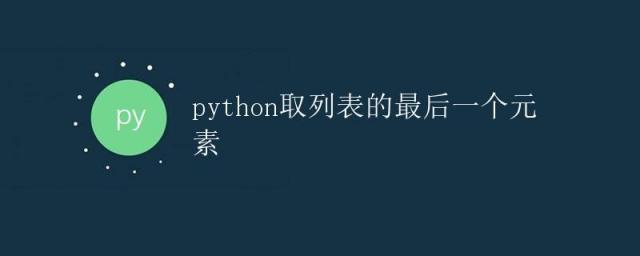Python取列表的最后一个元素
2024年04月23日 Python取列表的最后一个元素 极客笔记
Python取列表的最后一个元素

在Python中,列表是一种非常常用的数据结构,可以存储多个元素,可以是数字、字符串、对象等。列表是有序的,每个元素在列表中都有一个对应的索引值,从0开始递增。
有时候我们可能需要获取列表中的最后一个元素,这在很多情况下都是很有用的。下面我们就来详细讨论如何在Python中取列表的最后一个元素。
方法一:使用索引值-1
在Python中,我们可以使用索引值来访问列表中的元素。其中,-1 表示列表中的最后一个元素,-2 表示倒数第二个元素,以此类推。
my_list = [1, 2, 3, 4, 5]
last_element = my_list[-1]
print(f"The last element in the list is: {last_element}")
运行上面的代码,输出如下:
The last element in the list is: 5
方法二:使用列表方法pop()
我们还可以使用列表的pop()方法来取出最后一个元素,并且在列表中移除它。
my_list = [10, 20, 30, 40, 50]
last_element = my_list.pop()
print(f"The last element in the list is: {last_element}")
print(f"The modified list is: {my_list}")
运行上面的代码,输出如下:
The last element in the list is: 50
The modified list is: [10, 20, 30, 40]
需要注意的是,pop()方法会改变原始列表。
方法三:切片
我们也可以使用切片的方法来获取列表的最后一个元素。
my_list = ['a', 'b', 'c', 'd', 'e']
last_element = my_list[-1:]
print(f"The last element in the list is: {last_element}")
运行上面的代码,输出如下:
The last element in the list is: ['e']
需要注意的是,切片的返回结果是一个包含一个元素的列表。
方法四:使用max()函数
如果列表中元素的顺序是可以比较的(比如数字、字符串等),我们还可以使用max()函数来获取最后一个元素。
my_list = [6, 3, 8, 1, 5]
last_element = max(my_list)
print(f"The last element in the list is: {last_element}")
运行上面的代码,输出如下:
The last element in the list is: 8
总结
本文介绍了在Python中取列表的最后一个元素的几种方法,包括使用索引值、pop()方法、切片和max()函数。根据实际需求,选择合适的方法来获得列表的最后一个元素。
本文链接:http://so.lmcjl.com/news/2938/